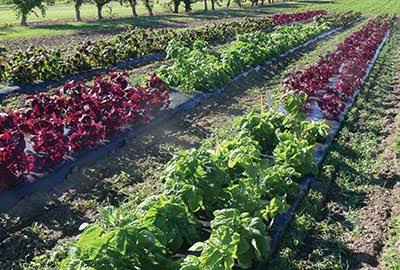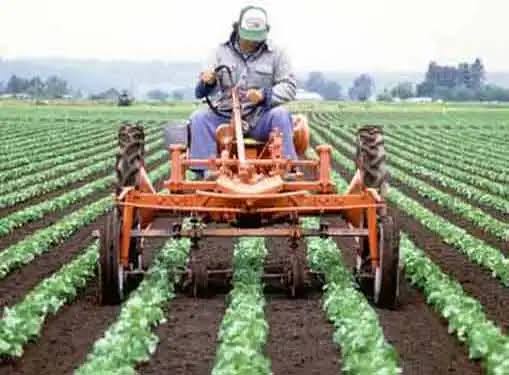Running a vegetable farm can be a rewarding venture, both in terms of financial gain and personal satisfaction. A profitable vegetable farm requires careful planning, dedication, and a good understanding of the basics of vegetable cultivation.
To begin with, choosing the right location for your vegetable farm is crucial. Opt for a site with well-drained soil, access to sunlight, and a reliable water source. Conducting soil tests can help you determine the nutrient levels and pH balance, allowing for proper soil preparation tailored to the needs of the vegetables you plan to grow.
Selecting the right vegetables is another key aspect of a profitable vegetable farm. Consider the climate and soil conditions of your region to choose crops that thrive in such environments. Popular and high-demand vegetables like tomatoes, peppers, and lettuce can be excellent choices for ensuring market success.
Implementing sustainable farming practices not only benefits the environment but also contributes to long-term profitability. Employing organic farming methods, such as composting, crop rotation, and integrated pest management, can enhance the quality of your produce and attract environmentally conscious consumers.
Efficient water management is essential for a profitable vegetable farm. Drip irrigation systems can help conserve water while ensuring that your crops receive adequate hydration. This not only reduces water costs but also promotes healthier plant growth and higher yields.
Furthermore, investing in quality seeds and seedlings is a wise strategy for a successful vegetable farm. Choose varieties that are well-suited to your local conditions, disease-resistant, and known for high yields. Starting with healthy, robust plants sets the foundation for a bountiful harvest.
Crop rotation is a practice that helps prevent soil depletion and reduces the risk of pests and diseases. By alternating the types of crops grown in specific areas, you can maintain soil fertility and minimize the need for chemical interventions. This sustainable approach contributes to the overall health of your vegetable farm.
To maximize profits, consider diversifying your produce and exploring niche markets. Offering unique or specialty vegetables can attract a niche customer base willing to pay a premium for exclusive items. Additionally, forming partnerships with local markets, restaurants, or community-supported agriculture (CSA) programs can secure consistent buyers for your produce.
Regular monitoring and record-keeping are essential for tracking the performance of your vegetable farm. Keep detailed records of expenses, yields, and market trends to identify areas for improvement and optimization. This data-driven approach enables informed decision-making, leading to increased efficiency and profitability over time.
In addition, a profitable vegetable farm requires a combination of thoughtful planning, sustainable practices, and adaptability to market trends. By focusing on soil health, efficient water management, and strategic crop selection, you can cultivate a thriving vegetable farm that not only sustains itself but also contributes to the well-being of your community and the environment.
Read Also: How to Hand-milk a Goat, Follow These Steps
How to start a Profitable Vegetable Farm

Starting a profitable vegetable farm requires careful planning and execution. Here’s a simplified guide to help you kickstart your venture:
Starting a vegetable farm that makes money involves a few key steps. Follow these simple tips to set yourself up for success.
1. Choose the Right Location: Pick a location with suitable soil and climate for the vegetables you want to grow. Ensure there’s access to water and that the land gets enough sunlight. This sets the foundation for healthy crop growth.
2. Plan Your Crops Wisely: Select vegetables that are in demand in your area and have a good market value. Consider the local climate and seasons to determine the best crops for your region. Planning your crop rotation can also optimize yield and soil health.
3. Prepare the Soil: Prepare the soil by clearing debris and adding organic matter. Conduct soil tests to determine nutrient levels and make necessary amendments. Healthy soil is crucial for robust plant growth.
4. Invest in Quality Seeds: Choose high-quality seeds from reputable suppliers. The right seeds can make a significant difference in the success of your vegetable farm. Consider factors such as disease resistance and yield potential.
5. Implement Efficient Watering Practices: Establish an efficient watering system to ensure your crops receive adequate moisture. Drip irrigation and soaker hoses are examples of water-saving techniques that also contribute to healthier plants.
6. Practice Pest and Disease Management: Regularly inspect your crops for pests and diseases. Implement integrated pest management strategies, which can include natural predators, organic pesticides, and crop rotation to maintain a healthy growing environment.
7. Employ Good Farming Practices: Adopt sustainable and eco-friendly farming practices. This not only benefits the environment but also enhances the long-term viability of your vegetable farm. Techniques such as companion planting and cover cropping can contribute to a balanced ecosystem.
8. Harvest at the Right Time: Learn the optimal time to harvest each vegetable to ensure peak freshness and flavor. Timely harvesting also contributes to higher market value and customer satisfaction.
9. Develop Marketing Strategies: Create effective marketing strategies to promote your vegetables. Consider selling directly to local markets, grocery stores, or even through community-supported agriculture (CSA) programs. Establishing a strong online presence can also attract customers.
10. Keep Detailed Records: Maintain detailed records of your farming activities, including expenses, yields, and market feedback. This information helps you make informed decisions, identify areas for improvement, and track the overall profitability of your vegetable farm.
By following these simple steps, you can lay the groundwork for a profitable vegetable farm. Remember to stay dedicated, adapt to challenges, and continuously educate yourself on best practices in vegetable farming. Happy farming.
Read Also: What is a dairy goat? What do dairy goats like to eat? Which goat gives more milk?
Benefits of Starting A Profitable Vegetable Farm

Starting a profitable vegetable farm comes with various benefits that extend beyond financial gains. Here are some advantages:
1. Healthy Lifestyle: Growing your vegetables promotes a healthier lifestyle. You have access to fresh, organic produce rich in nutrients, contributing to your well-being.
2. Environmental Impact: Vegetable farming, especially when done sustainably, has a lower environmental impact compared to large-scale industrial farming. It promotes biodiversity, reduces the need for harmful chemicals, and supports ecosystem health.
3. Community Engagement: A profitable vegetable farm can strengthen community ties. Local residents may appreciate having a nearby source of fresh produce, fostering a sense of community and supporting local businesses.
4. Financial Independence: Successful vegetable farming can provide a reliable income stream. This financial independence allows you to make decisions based on your goals and values.
5. Skill Development: Running a vegetable farm requires a diverse set of skills, from agricultural practices to marketing. Starting and managing your farm allows for continuous skill development and personal growth.
6. Job Creation: As your vegetable farm expands, you may need additional help, leading to job creation within your community. This can contribute to local economic development.
7. Sustainable Practices: By implementing sustainable farming practices, such as composting, water conservation, and natural pest control, you contribute to a more sustainable and resilient food system.
8. Educational Opportunities: Vegetable farming provides educational opportunities for yourself and others. You can share your knowledge with the community, schools, or through workshops, promoting awareness about sustainable agriculture.
9. Diversification of Income: Beyond selling fresh produce, you can explore additional revenue streams. This might include value-added products like jams, pickles, or offering agritourism experiences to diversify your income.
10. Food Security: Your vegetable farm contributes to local food security by providing a nearby and reliable source of fresh, nutritious food. This becomes especially crucial during times of supply chain disruptions.
11. Connection with Nature: Operating a vegetable farm connects you with nature. Spending time outdoors, observing the seasons, and understanding the intricacies of plant growth can be a fulfilling and grounding experience.
12. Contribution to Global Food System: Local vegetable farming contributes to a more resilient global food system. By reducing dependence on long-distance transportation, you help decrease the carbon footprint associated with food distribution.
Starting and maintaining a profitable vegetable farm involves hard work and dedication, but the numerous benefits make it a rewarding and impactful endeavor.
Read Also: A Step-by-Step Guide to Electronic Waste Disposal

